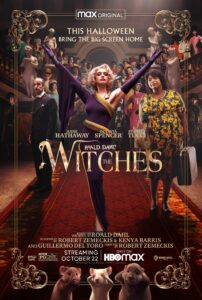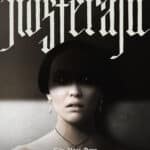
The Witches
Orphaned after an accident, an eight-year-old boy goes to live in Demopolis, Alabama, with his grandmother. It’s 1968, life is not easy for African Americans, but for grandmother and granddaughter the danger comes above all from the discovery that the witches – evil and horrible creatures who hate children above all else – have returned. Convinced they are escaping persecution, they take refuge in a luxury hotel where one of their cousins works, without knowing, however, that the annual gathering of witches will be held in that sumptuous place. And that the terrible Supreme Witch intends to transform all the children in the world into mice.
New transposition of Roald Dahl’s childhood classic, already brought to the screen in 1990 by Nicolas Roeg. Using digital animation, Zemeckis transforms a gothic tale into a colorful and Grand Guignolesque hellzapoppin’.
As it was easy to imagine, in the United States, where it was released on HBO Max before arriving in Italy on streaming platforms (Chili, Rakuten, Infinity, Timvision), The Witches was panned by the most intransigent liberal press for having transformed the protagonists whites and Europeans in Dahl’s children’s novel (white, Anglo-Saxon and most likely anti-Semitic author), in African Americans in Alabama in the years following the end of racial segregation. As if to say that certain topics are the result of the times we live in and of the new, old battles being fought, but that we need to be careful about the way we deal with them and the choices we make (a very explanatory article by Vox says right from the title that «The Witches is a weird, unfunny lesson in how not to adapt Roald Dahl’s classic – and problematic – horror tale»).
Of course, Zemeckis and his co-writers Guillermo Del Toro and Kenya Barris put their own spin on it: they don’t give reasons for the change of setting of the story and of the origin of the protagonists, who in the original come from Norway and live the adventure in the dear and old England, and instead prefer, on the one hand, to resort to the beloved CGI and animation (complete with references to Who Framed Roger Rabbit in the beautiful idea of the clothes flying in the air, emptied of the body, during the transition from man a topo) and on the other hand recreate the dark and camp atmosphere of Death Becomes Her.
The result is a bandwagon – a hellzapoppin’ – colorful and grandguignolesque, in which the figure of Anne Hathaway dominates above all, surprisingly histrionic and frightening with her horrifying body hidden behind her platinum blonde appearance. The real body of the witches – who under the wig are bald and pitted, have extendable arms, only three fingers and a single nail on their very long feet – recalls that of a fallen diva, a drug addict and at the same time a example of a 1960s female from The Wife Factory: a concentration of horror and unexpected grotesquery in a children’s film and typical of Zemeckis who does justice to the film’s many uncertainties.








